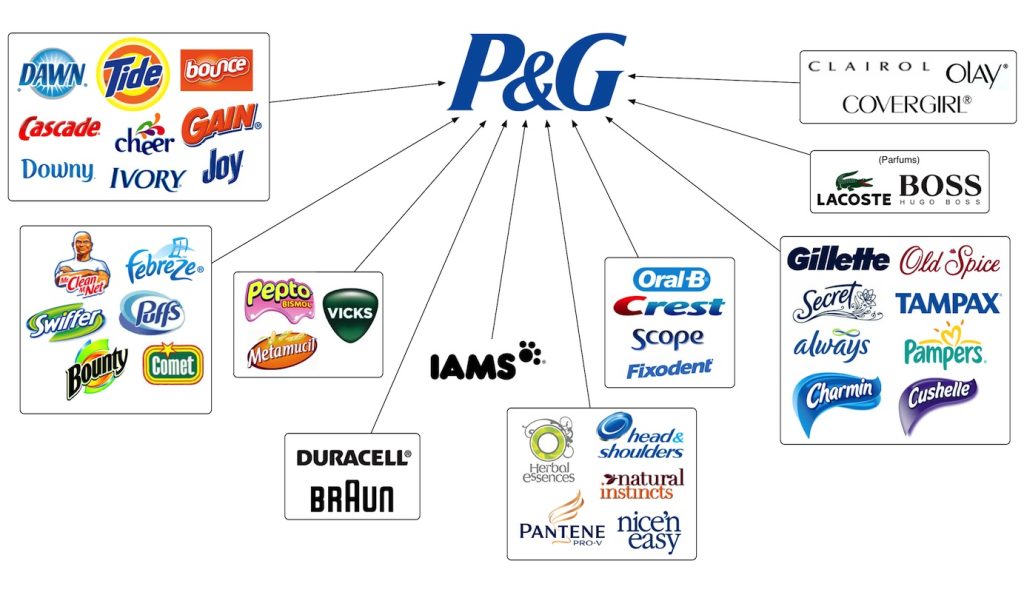Deeper Dive Into P&G Innovation Choice & Approach » Innovation Literacy

Since its inception, Procter & Gamble (P&G) has been at the helm of innovative strategies, driving success and setting benchmarks in the consumer goods sector. One of the latest innovations is its “Lean Innovation” model, blending traditional corporate structure with a startup’s agility.
Have you used any P&G products? Bet you already a long time user and customer – Gillette, Pantene, Pampers, Downy, Oral-B and Neurobion to name a few.

P&G’s “Lean Innovation” model represents a strategic shift towards a leaner, more agile approach to innovation. The company is making significant strides to break away from the conventional waterfall approach to product development. It is now integrating elements from agile methodologies like quick prototyping, iterative testing, and customer feedback-driven improvements. This approach allows P&G to shorten the time from idea conception to market delivery.
The primary driver of the Lean Innovation model’s success is its emphasis on customer-centricity. By incorporating feedback earlier and throughout the product development cycle, P&G ensures the final product meets the evolving consumer needs and preferences. Furthermore, the agile framework promotes cross-functional collaboration, leading to a more comprehensive and diverse input from various departmental perspectives. This strategy has proven instrumental in the successful launch of innovative products like the Oral-B iO Series 9 electric toothbrush and the Ariel PODS.
Other companies can leverage the Lean Innovation model for similar success. First, establish a customer-centric development process. This includes involving customers in the early stages of product development and using their feedback to shape the final product. Second, encourage cross-functional collaboration to bring diverse perspectives and expertise to the table. Lastly, create a culture of experimentation and risk-taking. The freedom to innovate, make mistakes, and learn from them is pivotal to fostering innovation.
While the Lean Innovation model offers numerous advantages, it’s not without potential downsides. The agile approach requires a substantial shift in the corporate culture, a change that can be difficult to manage. It also necessitates increased communication and coordination, which can be challenging for larger corporations. Furthermore, the risk-taking inherent to this approach could lead to more failures, potentially affecting the company’s reputation and bottom line.
In conclusion, P&G’s Lean Innovation model is a powerful tool that has enabled it to stay ahead in the competitive consumer goods sector. While the approach comes with potential challenges, the benefits of customer-centricity, cross-functional collaboration, and a culture of experimentation largely outweigh them. There’s no silver bullet approaches, organization has to explore and learn from own experience when climbing the curve.
Companies striving for a similar innovation trajectory can learn from P&G’s example, keeping in mind that any innovative approach should be tailored to fit their unique needs and contexts. By embracing such methodologies, they can better meet the evolving needs of their customers, fostering sustained success in an ever-changing business landscape.
5. Customizing Lean Innovation
Adopting P&G’s Lean Innovation model doesn’t imply a one-size-fits-all strategy. Every company is unique, and their approach to innovation should reflect their specific circumstances, resources, and objectives. Factors such as the company’s size, industry, and target audience can significantly influence the shape and scale of the Lean Innovation implementation. Customization is key, from shaping customer interaction channels to determining the nature and extent of cross-departmental collaborations.
6. Building an Innovation Culture
One of the fundamental tenets of the Lean Innovation model is fostering a culture of innovation within the organization. This is where leadership plays a crucial role. Leaders need to be proactive in endorsing and facilitating an environment where experimentation is not just allowed but encouraged. The fear of failure often stifles innovation, so building a culture where failures are seen as learning opportunities is a significant step toward driving innovation.
P&G is blessed with visionary leaders such as AG Lafley that saw innovation takes centre-stage during is 13 years as CEO (2 separate periods).
7. Leveraging Technology
Harnessing the power of technology is another pivotal aspect of successful innovation. P&G, for instance, has been a frontrunner in using technology, data, and AI to drive its innovation efforts. Using data analytics for consumer behavior analysis, forecasting, and personalizing customer experiences can fuel successful innovation (4).
8. Balancing Risks and Rewards
While Lean Innovation brings opportunities for success, it also comes with its share of risks. Businesses need to maintain a balance between pursuing potentially breakthrough innovations and managing the risks associated with them. This balance is critical, as too much risk-taking can lead to financial setbacks and harm the brand reputation.
9. Adapting to Change
The crux of Lean Innovation lies in adaptability. Companies looking to replicate P&G’s innovation success must be willing to adapt and evolve. This includes adapting to changing customer preferences, market trends, and even failures. A learning mindset and the flexibility to pivot when needed are vital in this journey of continuous innovation.
In conclusion, P&G’s Lean Innovation model presents a compelling roadmap for companies aiming to drive growth through innovation. While this model brings its challenges, the potential rewards in the form of increased customer satisfaction, market share, and overall growth are significant. Businesses that succeed in customizing this model to their context, fostering an innovation-friendly culture, leveraging technology, balancing risks, and staying adaptable will be well on their path to innovative excellence.
Brickbats? Ping me here
